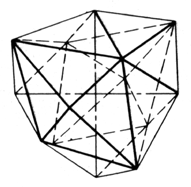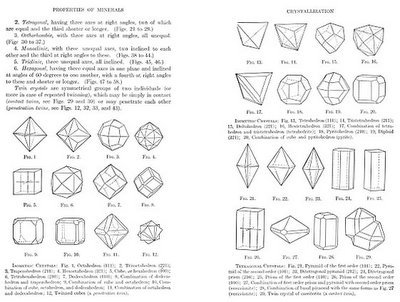“When light collides with other light, it can transform into particles of matter,” science writer Corey S. Powell posted on Twitter the other day. He was referring to recent evidence from the Relativistic Heavy Ion Collider that “pairs of electrons and positrons—particles of matter and antimatter—can be created directly by colliding very energetic photons.” In other words, the “conversion of energetic light into matter” might be physically achievable: you can create matter with light.
I am in no position to comment on the science of this beyond the sheer poetry of the description; if you want to learn more about the actual experiment, I’d strongly advise going to the source material, not to BLDGBLOG. But so many metaphors come to mind here—precipitation and snow; depositional 3D printing; shining looms of light, bringing matter into the cosmos.
Imagine an industrial printing facility of the far future whose only input is light. Factories of weird mirrored rooms where objects flash into existence one at a time, in a new manufacturing process extruding matter from illumination.
In any case, I was also reminded of a piece published in Nature back in 2011: “Moving mirrors make light from nothing.”
The hypothesis there was that a single mirror “moving through a vacuum at nearly the speed of light” could, through something called the Casimir force, actually generate photons—the mirror could create light. This was apparently given experimental support when “a shower of microwave photons [was] shaken loose from the vacuum” by a highly sensitive superconducting device known as a SQUID.
The scientist behind that experiment now “hopes to see a moving piece of metal generate detectable light from the vacuum,” as if farming light from nothingness, coaxing photons into appearing like seeds, shaking them loose from the void.
Mirrors moving through darkness at the speed of light can create light—the sheer poetry of this is astonishing to me, like a statement from the Gnostic Gospels.
Anyway, now put these two experiments together: use a moving mirror to pull light from darkness, then collide that light back into itself to generate matter. You could design a kind of internal combustion engine made of moving mirrors, turning darkness into light into matter.
Again, though, read the original articles if you prefer science over speculation.
 [Image: “Two images of the same room, one reconstructed from video footage of a bag of chips within the room (top) and the other photographed directly (bottom),” as described by
[Image: “Two images of the same room, one reconstructed from video footage of a bag of chips within the room (top) and the other photographed directly (bottom),” as described by  [Image: “
[Image: “ [Image: Schmidt Ocean Institute, via
[Image: Schmidt Ocean Institute, via 
